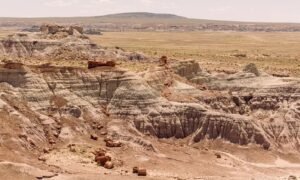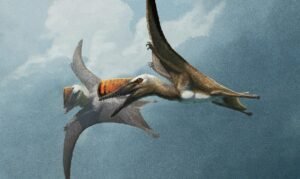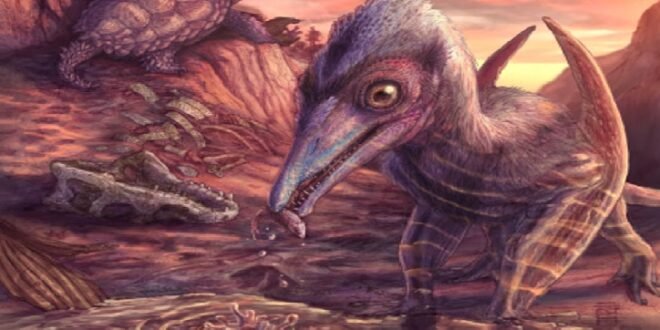09-07-2025
WASHINGTON: Scientists have discovered a new species of pterosaur, a flying reptile that soared above the dinosaurs more than 200 million years ago.
The jawbone of the ancient reptile was unearthed in Arizona back in 2011 but modern scanning techniques have now revealed details showing that it belongs to a species new to science.
 The research team, led by scientists at the Smithsonian’s National Museum of Natural History in Washington DC, has named the creature Eotephradactylus mcintireae, meaning “ash-winged dawn goddess”.
The research team, led by scientists at the Smithsonian’s National Museum of Natural History in Washington DC, has named the creature Eotephradactylus mcintireae, meaning “ash-winged dawn goddess”.
It is a reference to the volcanic ash that helped preserve its bones in an ancient riverbed.
Details of the discovery are published in the journal Proceedings of the National Academy of Sciences.
At about 209 million years old, this is now believed to be the earliest pterosaur to be found in North America.
“The bones of Triassic pterosaurs are small, thin, and often hollow, so they get destroyed before they get fossilized,” explained Dr Kligman.
The site of this discovery is a fossil bed in a desert landscape of ancient rock in the Petrified Forest National Park.
More than 200 million years ago, this place was a riverbed and layers of sediment gradually trapped and preserved bones, scales and other evidence of life at the time.
The river ran through the central region of what was the supercontinent of Pangaea, which was formed from all of Earth’s landmasses.
 The pterosaur jaw is just one part of a collection of fossils found at the same site, including bones, teeth, fish scales and even fossilized poo (also known as coprolites). Dr Kligman said; “our ability to recognize pterosaur bones in (these ancient) river deposits suggests there may be other similar deposits from Triassic rocks around the world that may also preserve pterosaur bones.”
The pterosaur jaw is just one part of a collection of fossils found at the same site, including bones, teeth, fish scales and even fossilized poo (also known as coprolites). Dr Kligman said; “our ability to recognize pterosaur bones in (these ancient) river deposits suggests there may be other similar deposits from Triassic rocks around the world that may also preserve pterosaur bones.”
Studying the pterosaur’s teeth also provided clues about what the seagull-sized winged reptile would have eaten.
“They have an unusually high degree of wear at their tips,” explained Dr Kligman. Suggesting that this pterosaur was feeding on something with hard body parts.
The most likely prey, he told media, were primitive fish that would have been covered in an armor of bony scales.
Scientists say the site of the discovery has preserved a “snapshot” of an ecosystem where groups of animals that are now extinct, including giant amphibians and ancient armored crocodile relatives, lived alongside animals that we could recognize today, including frogs and turtles. This fossil bed, Dr Kligman said, has preserved evidence of an evolutionary “transition” 200 million years ago.
“We see groups that thrived later living alongside older animals that (didn’t) make it past the Triassic.
“Fossil beds like these enable us to establish that all of these animals actually lived together.”
In 1824, 200 years ago, Megalosaurus was the first dinosaur to ever be described in a scientific paper. William Buckland studied fossils from Stonesfield in Oxfordshire in order to describe the animal.
In this episode, Victoria Gill visits palaeontologist Dr Emma Nicholls at the Oxford University Museum of Natural History, who shows her those very fossils that launched the new science of palaeontology. Danielle Czerkaszyn then opens the archives to reveal the scientific illustrations of Megalosaurus by Mary Morland, which helped shape Buckland’s description. (Int’l Monitoring Desk)
 Pressmediaofindia
Pressmediaofindia




